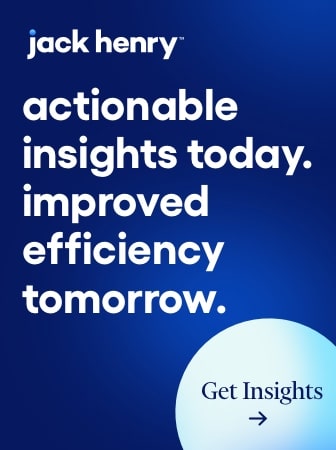The report: Embedded finance: The choices and trade-offs for U.S. Banks
Source: McKinsey & Company
Why we picked it: High-profile failures and a torrent of consent orders have raised questions about the future viability of the embedded finance and BaaS models. It’s time for a sober but balanced appraisal.
Executive Summary
Embedded finance presents both opportunities and risks for U.S. banks. By partnering with non-financial brands and platforms, banks can expand distribution and access new customer segments with relatively low costs. However, embedded finance also risks ceding customer relationships and product commoditization. The optimal strategy depends on a bank’s size, distribution footprint, customer base, and products. Smaller banks can leverage embedded finance for deposits with minimal cannibalization risk. Regional and segment-focused banks can extend lending products through partnerships. Large diversified banks face higher risks but can capitalize on specialized capabilities like credit decisioning at scale.
Key Takeaways
- Banks must navigate the embedded finance trend carefully, weighing distribution gains against potential revenue losses.
- Six potential strategic postures enable different approaches based on a bank’s strengths and risk tolerance.
- Smaller banks can safely pursue deposit partnerships, while larger banks should focus on differentiated lending capabilities.
- Partnering with software vendors/marketplaces is higher risk but allows banks to reach new customer segments.
- Building in-house “challenger” offerings can replicate the seamless embedded finance experience.
What we liked about it: The report is direct and precise in its recommendations for specific institution types and does not shy away from looking hard at the risks.

Navigate And Win The Branch Transformation Race
Learn how to navigate and win over customers with the right branch transformation. Listen to JP Lacroix and Marbue Brown discuss strategies, insights, and more.
Read More about Navigate And Win The Branch Transformation Race

Improve Your Business Outcomes Through Data & Analytics
Gain centralized access to the credit bureaus and 20+ alternative data sources. Leverage advanced analytics to optimize marketing campaigns and loan decisions.
Read More about Improve Your Business Outcomes Through Data & Analytics
The Rise of Embedded Finance
Over the past few years, major brands and tech platforms have partnered with banks to launch innovative “embedded finance” products that enhance customer experience. By integrating financial services like lending, payments and banking into their core non-financial offerings, companies like Toast, Uber and airlines have unlocked new value for customers. McKinsey research estimates the embedded finance opportunity in the U.S. is worth $20 billion.
A Little About the Value of Embedded Finance:
While embedded finance expands banks’ distribution footprint at relatively low cost, it also introduces significant risks like customer disintermediation and product commoditization. As larger players target more mainstream banking segments, incumbent institutions face tough choices: cede market share or participate by sharing economics.
Strategic Postures for Different Bank Archetypes
The optimal embedded finance strategy depends greatly on a bank’s specific characteristics. Three main archetypes illuminate the key trade-offs:
Durbin-exempt banks <$10b in assets: The 9,300+ banks under $10B in assets have a regulatory advantage enabling higher debit interchange pricing. As a result, many smaller players like Evolve Bank & Trust power fintechs’ deposit account products. However, fully embedded use cases require digital capabilities that can strain smaller institutions.
Dig Deeper Into the Trends:
Over 9,300 banks (95% of U.S. institutions) are under $10B in assets and Durbin-exempt.
For these banks, embedded finance provides a distribution multiplier with minimal cannibalization risk. But capitalizing requires rethinking technology, operations and risk management – likely through partnerships rather than custom builds. Specialization and differentiation will be crucial to avoid mere commodity status.
Regional and segment specialist banks: With a more focused geographic footprint or customer segment, the cannibalization risks are lower for these banks outside their core markets and audiences. Their greater scale allows strategic investments in digital capabilities to serve nationwide consumer niches (e.g. Citizens’ iPhone financing) or SMEs.
Commercially oriented regional banks can comfortably pursue embedded retail banking products, while those serving larger companies could extend offerings to SMEs through partnerships. With the right expertise, these banks can generate incremental revenue from new segments with little downside.
Large, diversified national banks: The biggest national players face the toughest embedded finance challenge. Their scale makes any distribution deal potentially cannibalistic, and earlier deposit/debit products were less compelling for their cost structures.
However, the next embedded finance wave around lending creates an opportunity. Brands will likely value partners with large balance sheets and sophisticated credit decisioning to facilitate things like massive e-commerce lending programs.
Large banks can also leverage strong proprietary capabilities in specialized areas like trade finance (HSBC’s partnership with digital logistics firms). While the cannibalization threat remains high, differentiated expertise can attract lucrative embedded deals.

Six Strategic Postures for Banks
Given the nuanced opportunities and risks, banks should consider one of six potential embedded finance postures:
1. Deliver in-house experiences: Recreate seamless digital lending and account opening journeys through proprietary “challenger” offerings like KeyBank’s Laurel Road.
2. Acquire or build a distributor: Make the opposite move and purchase software distribution capabilities as M&T did with lawyer banking platform Nota.
3. Partner with large enterprises: Provide turnkey embedded offerings like CFO tools and payroll to enterprise clients seeking new revenue streams.
4. Partner with software vendors and marketplaces: Form strategic product design and marketing partnerships with leading distribution platforms like Toast and Shopify.
5. Specialize in lending-as-a-service: Leverage unique credit expertise and serve fintech lenders like Cross River’s BNPL enablement.
6. Offer balance sheet and risk services: Provide regulatory sponsorship and core banking services through Banking-as-a-Service platforms.
The embedded finance wave is cresting, forcing incumbent banks to rethink customer acquisition models. While risks abound, the opportunities to generate growth through ecosystem partnerships are immense for those making the right strategic choices.
Editor’s note: This article was prepared with AI language software and edited for clarity and accuracy by The Financial Brand editorial team.
Looking for more resources on embedded finance?







